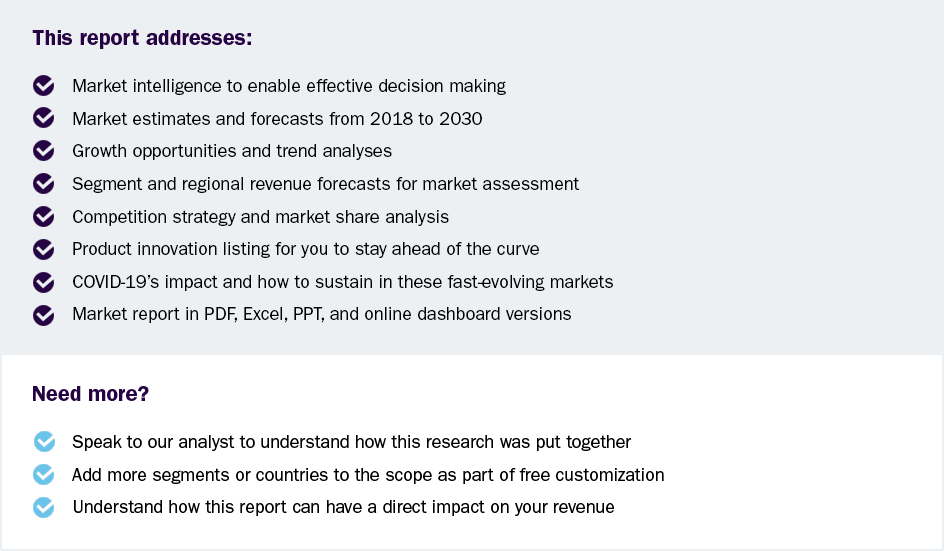Neuromorphic Computing Market To Reach $20.27 Billion By 2030
Neuromorphic Computing Market Growth & Trends
The global neuromorphic computing market size is expected to reach USD 20.27 billion by 2030, registering a CAGR of 19.9% from 2024 to 2030, according to a new report by Grand View Research, Inc. The rise in demand for artificial intelligence and machine learning technology increased software utilization in neuromorphic computing, and the growing demand to produce better-integrated circuits (ICs) is attributed to the growth of the Neuromorphic computing market.
AI-powered neuromorphic chips are in high demand in the automotive industry because of their constant requirement for developing AI algorithms for high throughput with low power demands. Moreover, Neuromorphic chips are ideal for classification methods and could be used in various autonomous driving scenarios. For instance, in December 2020, Mercedes-Benz AG collaborated with the Intel Neuromorphic Research Community to investigate how neuromorphic chips could improve energy efficiency, speed, and accuracy for vehicle-related AI applications.
The increasing use of neuromorphic technology in healthcare applications is attributed to market growth. Moreover, Neuromorphic devices combined with artificial intelligence help detect health issues in individuals. For instance, in August 2022, Researchers from the University of Chicago’s Pritzker School of Molecular Engineering in the U.S. developed a wearable neuromorphic computing chip. This chip is developed by fusing wearable technology with artificial intelligence and machine learning to analyze health data.
Neuromorphic computing, which uses observations from neuroscience to create chips that function like the biological brain, aims to improve energy efficiency, computation speed, and learning efficiency in various applications such as voice, vision, gesture recognition, robotics, and search retrieval. For instance, in October 2021, Intel Corporation released Loihi 2, its 2nd generation neuromorphic research chip, and Lava, an open-source software platform for creating neuro-inspired applications and computing.
Neuromorphic computing provides benefits such as fast parallel processing with minimum power requirement. It also eliminates the need for back-and-forth data movement between components in the von Neumann architecture; this is expected to drive its adoption for image and signal processing applications. Moreover, its expected adoption in consumer electronics, automotive, healthcare, and military & defense sectors will also be largely responsible for driving the market growth.
 Request a free sample copy or view report summary: Neuromorphic Computing Market Report
Request a free sample copy or view report summary: Neuromorphic Computing Market Report
Neuromorphic Computing Market Report Highlights
-
The image processing segment led the market with a revenue share of 45.5% in 2023. This can be attributed to the rising deployment of computer vision in numerous industries, including automotive, healthcare, and media & entertainment, among others.
-
Edge deployment accounted for the largest market share in 2023. The increasing application of edge computing in identifying body gestures for touchless interfaces, automobiles with sensitive voice controls, and internal intelligence for assistant robots contribute to this segment’s growth.
-
The hardware segment accounted for a dominant revenue share in 2023. This is attributed to the increasing demand for specialized neuromorphic chips and systems that can efficiently process complex data patterns.
-
Consumer electronics accounted for the highest revenue share in 2023. Increasing sales of electronic devices, including laptops, PCs, and tablets, are leading to a progressive increase in demand for neuromorphic chips from the consumer electronics industry.
-
North America neuromorphic computing market led the market with 37.3% of the revenue share in 2023. This is owing to the presence of a robust technological infrastructure, leading technology companies, and significant investments in research and development activities in this region.
Neuromorphic Computing Market Segmentation
Grand View Research has segmented the global neuromorphic computing market on the basis of on application, end-use, deployment, component, and region:
Neuromorphic Computing Application Outlook (Revenue, USD Million, 2018 - 2030)
-
Signal Processing
-
Image Processing
-
Data Processing
-
Object Detection
-
Others
Neuromorphic Computing Deployment Outlook (Revenue, USD Million, 2018 - 2030)
-
Edge
-
Cloud
Neuromorphic Computing Component Outlook (Revenue, USD Million, 2018 - 2030)
-
Hardware
-
Software
-
Services
Neuromorphic Computing End-use Outlook (Revenue, USD Million, 2018 - 2030)
-
Consumer Electronics
-
Automotive
-
Healthcare
-
Military & Defense
-
Others
Neuromorphic Computing Regional Outlook (Revenue, USD Million, 2018 - 2030)
-
North America
-
U.S.
-
Canada
-
Mexico
-
-
Europe
-
UK
-
Germany
-
France
-
-
Asia Pacific
-
Japan
-
India
-
China
-
-
South America
-
Brazil
-
-
Middle East & Africa
List of Key Players in the Neuromorphic Computing Market
-
Brain Corporation
-
CEA-Leti
-
General Vision Inc.
-
Hewlett Packard Enterprise Development LP
-
HRL Laboratories, LLC
-
IBM
-
Intel Corporation
-
Knowm Inc.
-
Qualcomm Technologies, Inc.
-
SAMSUNG
-
Vicarious

